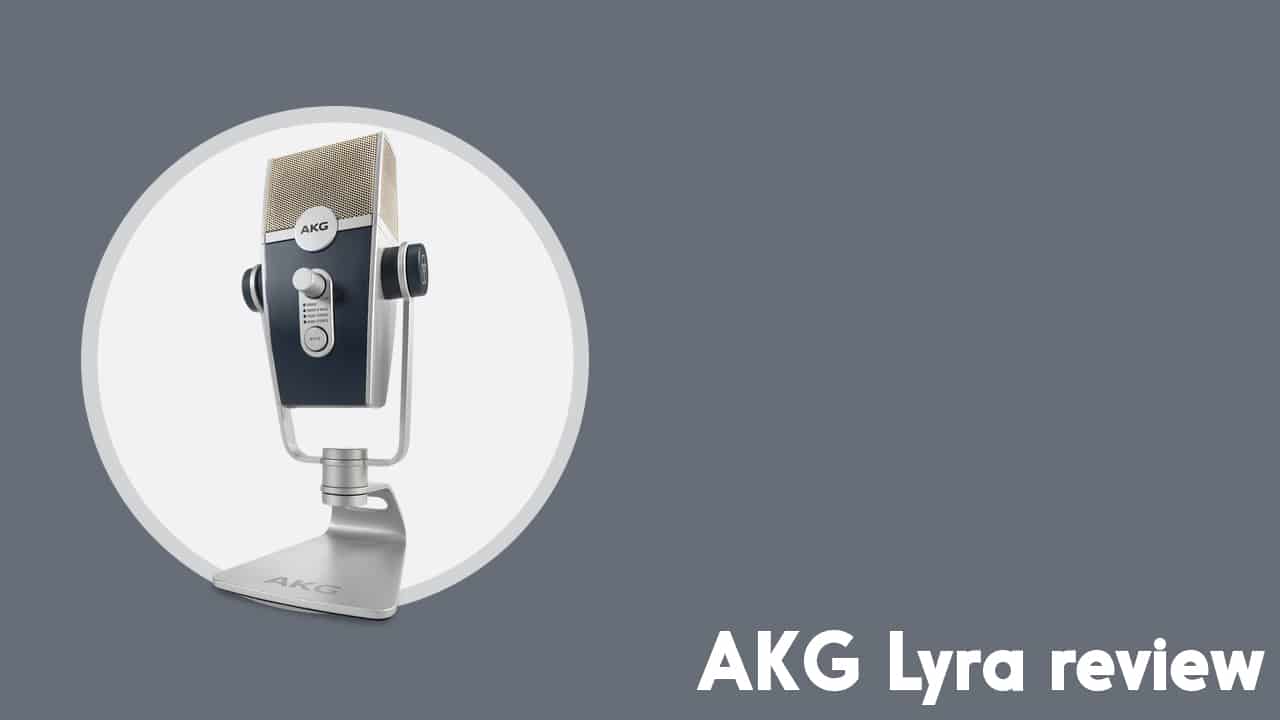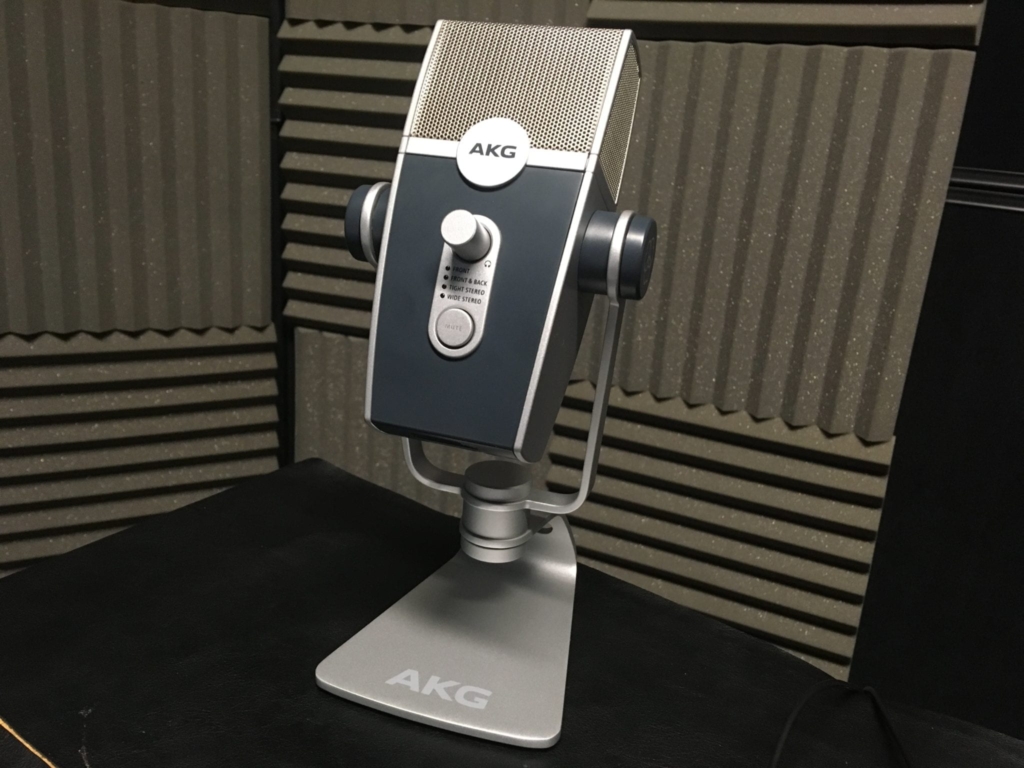AKG Lyra Review | Best Sounding USB Mic for Podcasting?

USB microphones have improved by leaps and bounds over the past couple of years. And the AKG Lyra is a brand new piece of kit that potentially takes things to a whole new level.
We had one of the very first models sent out to us recently, and were excited to take a look. Here’s the lowdown…
Who Is the AKG Lyra For?
The AKG Lyra is marketed as an “Ultra-HD Multimode USB Microphone”.
Put simply, it’s a great sounding USB mic with a fair bit of use flexibility.
As a USB mic, it works right out of the box. Plug it into your computer, load up your audio software or call recorder, and away you go.
This mic is designed for folks who want premium quality audio, without needing to have additional gear or any in-depth knowledge of audio.
It can also work equally well for audiophiles who spend a bit of time recording on the road. The AKG Lyra could easily become part of your travel kit, along with your laptop and a pair of headphones.

Look & Feel of the AKG Lyra
“Modern design with vintage appeal” is a nice summary by AKG themselves. It’s a good looking mic that’ll attract folks who do video along with their podcasting. I thought it looked familiar, and sure enough, it doesn’t look too dissimilar from the excellent AKG C214.
It comes mounted on its own desk stand, which can be easily taken off if you’d prefer to mount it on to a boom arm instead.
The AKG Lyra is a solid feeling, robust bit of kit that weighs just over 2lbs, or just over 90kg.
Features
On the base of the mic itself, you’ll find the USB out, and a 3.5mm jack to plug in your headphones. This lets you hear what’s being recorded, as it’s being recorded.
On the front, there’s a volume dial for your headphones. Adjusting this won’t affect your recording in any way.
There’s also a mute button. This could come in handy if you do interviews online, and tend to get disturbed a lot whilst recording.
There’s 4 lights for the 4 different recording settings on the front too, which I’ll talk about more below. These are controlled from the ‘Microphone Pattern’ dial on the back of the mic.
Also on the back, there’s a gain dial. This is your input recording volume, and will directly affect the audio being recorded.
Recording Settings
I mentioned the ‘Microphone Pattern’ dial and the 4 lights on the front. These are basically the mic’s polar pattern settings.
They are Front, Front & Back, Tight Stereo and Wide Stereo. For most podcasters, it’s likely you’ll only be using the Front setting. The others will give you options if you’re sharing the mic, but that’s never an optimal way to record unless you absolutely have to.
Downsides?
One minor irk for me was the gain dial being on the back of the mic. This makes it awkward to adjust your levels whilst recording. You need to fumble around blindly on the rear of the mic, where there’s also another dial.
Personally, I’d have prioritised the gain dial front and centre, and put the headphone volume dial round the back if need be.
This definitely isn’t a deal-breaker, but a small annoyance I thought was worth pointing out.
Sound Quality
The AKG Lyra records 24-bit / 192 kHz audio. Here’s a completely unprocessed sound sample of me putting it through its paces.
This sound sample was recorded into a Mac using Audacity.
Cost
You can pick up a brand new AKG Lyra on Amazon for $150, or Amazon UK for £145.
Summary: AKG Lyra Review
I’ve always been of the opinion that paying 3 figures for a USB mic is a bit over the odds. But, I actually think the AKG Lyra is great value. It doesn’t sound like a USB mic in any way, and works right out of the box on its own little desk stand.
My one minor gripe was the gain dial being located on the back, rather than the front of the mic. As I said above, this definitely isn’t a deal-breaker.
I think the AKG Lyra is ideal for those who want premium quality audio, without needing several different bits of kit. If you run a solo or online interview show, and have a decent budget to put towards your gear, then this mic is worthy of your consideration.
Remember though, if you’re still shopping around, there are many other great mics out there. And if you need help or advice with your setup, be sure to check out Podcraft Academy. There you’ll find courses, resources, our community forums, and have access to regular live Q&A sessions.
